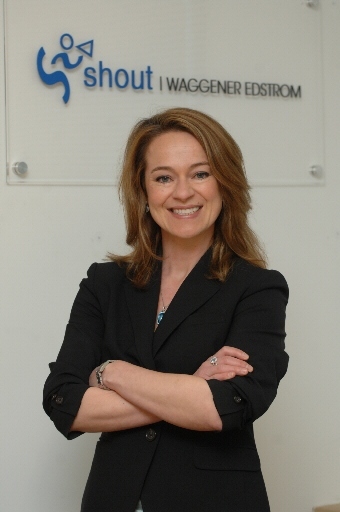Expert on digital marketing calls on companies to set up right platform to deal with ever-growing universe of social networks
In the era of Facebook and Twitter -- and also Foursquare, LinkedIn, Instagram, Pinterest and many other social networks -- PR professionals are faced with an ever-growing list of channels that require different approaches and strategies.
For Jennifer Houston, president of WE Studio D team at Waggener Edstrom Worldwide, the explosive growth of such social networks where there are no national boundaries offers a great chance to expand the global communications agency’s reach, particularly concerning its expertise in digital marketing.
 |
Jennifer Houston, president of WE Studio D team at Waggener Edstrom Worldwide (Shout Waggener Edstrom) |
Houston, who has more than 17 years of experience in building and implementing online and offline communications strategies for corporate clients, made a trip to Seoul late last month to help with the final touches to WE’s investment deal to enter Korea’s PR market. The PR heavyweight bought a stake in Shout Communications Korea, a local PR firm, and Shout has been rebranded as “Shout Waggener Edstrom.”
The deal cuts both ways. Shout’s clients will be able to tap into WE’s global networks and digital marketing resources; WE will be in a better position to sign on major Korean firms readying themselves to enter foreign markets.
The equity partnership is expected to further strengthen the position of Shout Waggener Edstrom, which is already leveraging WE’s global consulting frameworks. A prime example is the ongoing project with POSCO, one of the world’s largest steelmakers.
In an interview, Houston said that Shout is helping POSCO to set up a broad social network strategy and WE’s framework called “social influence system” is being used for the groundbreaking consulting service.
“It’s a value we offer in Korea and our goal is to work with brands like POSCO,” she said.
The consulting service for POSCO centers around the incorporation of WE’s social network framework and work out ways to define what should be done if the steelmaker sets out to communicate with its clients, partners and general audience through social networks.
A number of corporations across the world jumped into the social network marketing and PR campaigns, attempting to ride the boom of Facebook and Twitter, only to miss out on how they could tie such new media with their own business strategy, Houston said.
Social influence system, she said, is aimed at helping companies to identify where the audience is and how they can internally set up the right system.
“We did create SIS, but we did it against business problems clients had,” she said. A new approach is needed at a corporate level, especially in connection with an emerging consumer trend. Unlike passive consumers of the past, today’s people familiar with social networks tend to believe they “own” the brands they like, and want to be involved in the production process, offering their own voices.
Thanks to Facebook, Twitter, corporate blogs and many other digital media, companies can respond to such demands, and as far as Korea is concerned, local companies can engage their audiences more effectively by harnessing always-on Internet in the most wired nation, Houston said.
But therein lies a tricky problem. There are so many social networks, many of which come and go at a dizzying pace. Corporate decision-makers, after all, have to choose the right social network and run it to produce tangible results.
“You need to work with a partner who knows the changes,” Houston said. A consulting firm who understand the whole process and can recommend an optimal social channel for a client is a big plus, she said.
The right beginning is crucial as it dictates how the system will work in the long term.
“Once you set up an influence system, there will be another (social network), but it will be very simple if you set up a platform -- you just add another channel,” she said, calling the strategy “right once, publish everywhere.”
Unified content and message remain the same, but a variety of channels ranging from Facebook to Pinterest can be deployed once a solid platform is in place, she said.
Companies have direct control of their own brand websites, corporate Twitter and Facebook accounts and newsletters. These channels should be managed strategically. At the same time, efforts should be made to boost corporate value and reputations in what is called “earned media” such as review-oriented blogs and news articles.
To deal with the ever-expanding universe of media channels, an encompassing view is in order.
“A really powerful trend today is that audiences don’t care which channels (offer content),” she said, adding that companies should balance online and offline channels to better interact with customers.
By Yang Sung-jin
(
insight@heraldcorp.com)








